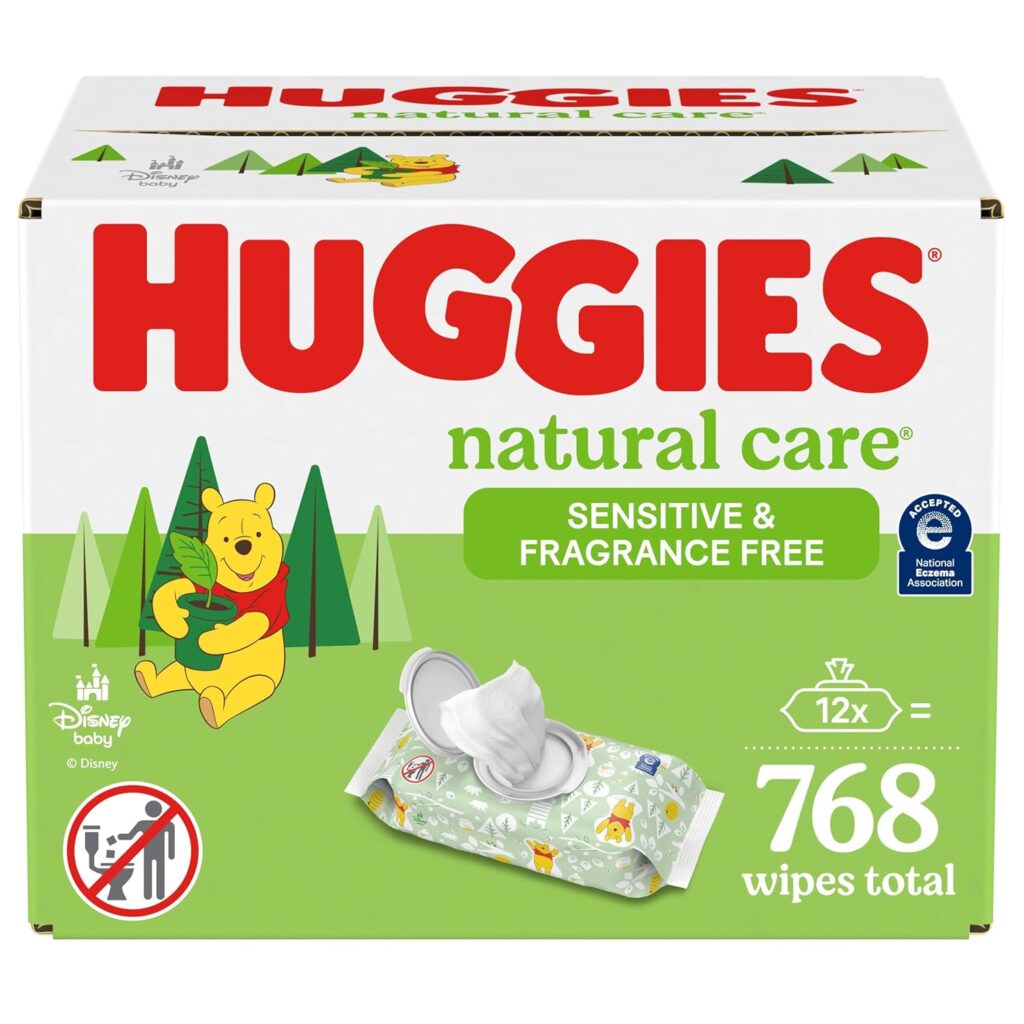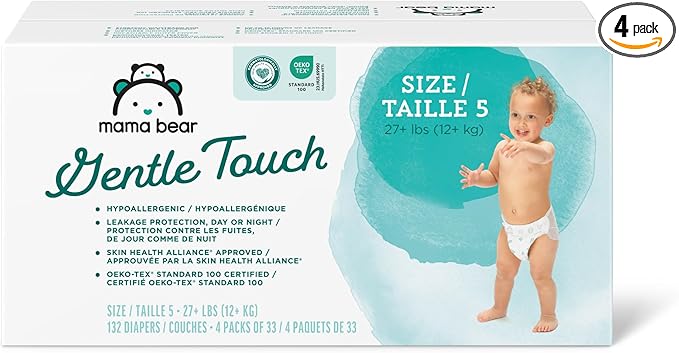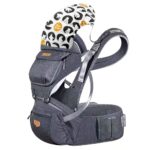Let’s face it. Diaper Changes Stress-Free aren’t the most fun part of parenting. But they don’t have to be a battle. Here are some tips to make them easier for both you and your baby.

Credit : Amazon
Why Do Babies Cry During Diaper Changes?
Babies often cry during diaper changes for a few reasons. Understanding these can help you keep them calm.
- Feeling Cold: Taking off clothes can make babies feel chilly. Cold wipes don’t help either.
- Hunger: A hungry baby is an unhappy baby. Try feeding them first.
- Confusion: Babies don’t know what’s happening. This can make them scared.
- Interrupted Playtime: Older babies might be upset if you stop their fun.
- Disliking Restrictions: Babies love to move. Diaper changes can feel too restrictive.
Diaper Changes Stress-Free find the Tips to Make it Easier
Here are some simple tips to make diaper changes quick and stress-free:
- Gather Supplies First: Keep everything you need in one place. Diapers, wipes, rash cream, and a toy for distraction.
- Keep Your Baby Distracted: Toys, songs, and talking can help. Explain what you’re doing. Your voice can comfort them.
- Warm the Wipes: Cold wipes can make babies cry. Warm them up a bit.
- Use Fun Decorations: Create a fun area. A colorful mobile can keep your baby entertained.
- Name Body Parts: While cleaning, point to and name body parts. “This is your tummy!” It distracts them and helps them learn.
- Combine Tasks: Do small tasks like trimming nails right after the diaper change.
- Plan Around Feeding Times: Change diapers after feeding. A full tummy makes a happy baby.
Benefits of These Tips
Using these tips can make diaper changes smoother:
- Your Baby Stays Happy: A calm baby is easier to manage.
- You Feel Less Stressed: Quick changes save time and energy.
- Your Baby Learns: Talking or singing helps them learn sounds and words.

Credit : Amazon
How to Handle Fussy Babies During Diaper Changes
Even with preparation, your baby might still resist. Don’t worry! Here are more strategies:
- Be Quick and Gentle: Babies have short attention spans. Quick but gentle changes help.
- Use Distraction Tools: Try bubbles, a mirror, or a special toy just for diaper changes.
- Change the Scenery: If the changing table isn’t working, try a blanket on the floor or bed.
- Involve Your Baby: Give older babies small tasks. Let them hold the wipes or help open the diaper.
- Try a Standing Diaper Change: For babies who can stand, this might be easier.
- Keep Calm and Patient: Your baby senses your frustration. Stay calm and use a gentle tone.
Safety Tips for Diaper Changes
Safety is crucial during diaper changes:
- Never Leave Your Baby Unattended: Always keep one hand on your baby.
- Secure Your Supplies: Keep items out of your baby’s reach.
- Use a Clean Surface: Clean the changing area after each use.
- Check for Allergies: Watch for skin reactions to new products.
- Choose the Right Diapers: Ensure diapers fit well and are suitable for your baby’s age and weight.
When to Change Your Baby’s Diaper
Frequent changes keep your baby healthy and comfortable:
- Newborns: Change every 2–3 hours. Newborns have sensitive skin.
- Older Babies: Change whenever diapers are wet or soiled to avoid rashes.
- Before Sleep: Change before bed to help them sleep longer.
- After Feeding: Many babies soil their diapers after feeding.
The Importance of a Positive Diaper-Changing Experience
A calm diaper change isn’t just about cleanliness. It’s also a bonding time:
- Build Trust: Gentle care helps your baby feel safe.
- Boost Language Development: Talking or singing helps your baby learn new sounds and words.
- Strengthen Your Bond: Smiling, talking, or playing builds a loving connection.
Common Challenges and How to Overcome Them
Here are some common challenges and how to handle them:
- Wriggly Babies: Use distractions. Try a standing change for older babies. Use a secure pad with raised edges.
- Diaper Rash: Change diapers frequently. Use a gentle rash cream. Give diaper-free time daily.
- Resistance to Changes: Give choices. Explain what you’re doing. Offer praise for cooperation.
- Messy Situations: Keep a towel or extra wipes handy. Use a waterproof pad. Keep spare clothes nearby.

Credit : Amazon
Encouraging Good Habits Early
Start teaching hygiene early. This helps with potty training later:
- Use Simple Words: Introduce basic words like “clean” and “dirty.”
- Praise Good Behavior: Encourage cooperation with lots of praise.
- Introduce Potty Training Gradually: Make it a fun and positive experience when they show readiness.
Tools and Apps to Simplify Diaper Changes
Technology can help make parenting easier:
- Diaper Wipe Warmers: Keep wipes warm for more comfortable changes.
- Baby Connect App: Track diaper changes, feeding schedules, and sleep patterns.
- Portable Changing Kits: Ideal for outings. Includes diapers, wipes, and a small changing pad.
Final Thoughts
Diaper changes don’t have to be stressful. With preparation and creativity, you can make this routine task more enjoyable for both you and your baby.
Remember:
- Stay calm and patient.
- Use distractions to keep your baby entertained.
- Create a safe, clean, and fun changing environment.
These simple steps can turn diaper changes into special bonding time with your little one. Happy parenting!
Pros
1. Helps Build Baby’s Trust
When diaper changes are done gently and calmly, it creates a sense of safety for your baby. This trust strengthens the parent-child bond over time.
- Why It Matters: A calm and predictable routine reassures babies during vulnerable moments.
- Impact: It helps develop their emotional security and reduces fussiness during future changes.
2. Encourages Early Learning
Simple actions like naming body parts or singing songs during diaper changes turn a routine task into an educational experience.
- Why It Matters: Babies learn language and recognize their body parts faster.
- Impact: This lays a foundation for cognitive and communication development.
3. Promotes Skin Health
Frequent and proper diaper changes prevent diaper rash and keep your baby’s skin healthy. Using the right creams and products enhances comfort and hygiene.
- Why It Matters: Sensitive baby skin needs protection from moisture and irritants.
- Impact: Healthy skin keeps your baby happy and reduces medical concerns.
4. Involves Fun and Distraction
Using toys, songs, or playful techniques makes the process enjoyable for your baby. Distractions turn a potentially stressful situation into a fun one.
- Why It Matters: A positive experience reduces resistance.
- Impact: Babies may cooperate more willingly during future diaper changes.
5. Supports Routine Building
Regular diaper changes help establish a daily routine. Babies thrive on predictable schedules, making them feel more secure.
- Why It Matters: A consistent approach builds structure in your baby’s life.
- Impact: This can help with better sleep patterns and easier transitions to potty training.
Cons
1. Can Be Time-Consuming
Frequent diaper changes, especially for newborns, can take up a lot of time during the day.
- Why It’s Challenging: Parents often need to juggle multiple tasks, making it hard to dedicate time to each change.
- Impact: It may lead to rushed diaper changes, which can upset the baby or cause hygiene issues.
2. Requires Extra Resources
Some techniques, like using warm wipes or portable changing stations, need additional tools or gadgets. These can add to parenting expenses.
- Why It’s Challenging: Not all families have access to or can afford extra supplies.
- Impact: Without these tools, parents might struggle to keep their baby calm during changes.
3. Messy Situations Are Inevitable
Despite preparation, accidents like leaks or spills are common. Cleaning up can be inconvenient, especially in public places.
- Why It’s Challenging: Unpredictable messes add stress to an already demanding task.
- Impact: It can make outings or travel with babies more difficult.
4. Resistance from Older Babies
As babies grow, they may resist diaper changes because they dislike restrictions or interruptions to their playtime.
- Why It’s Challenging: Toddlers want more control over their bodies and activities.
- Impact: This can lead to tantrums or struggles during the process.
5. Potential for Back Strain
Changing diapers on low surfaces or in awkward positions can cause back pain for parents, especially during frequent changes.
- Why It’s Challenging: Physical discomfort adds to the difficulty of managing diaper changes.
- Impact: This can lead to fatigue, especially for caregivers with pre-existing back issues.
Conclusion
Diaper changes are a mix of challenges and rewards. By understanding these pros and cons, parents can choose techniques that work best for them and their baby. With the right approach, this routine task can become a moment of care, bonding, and growth.







